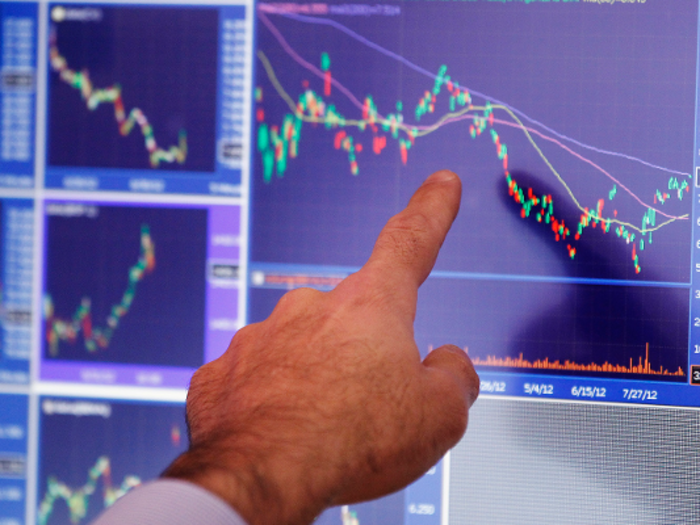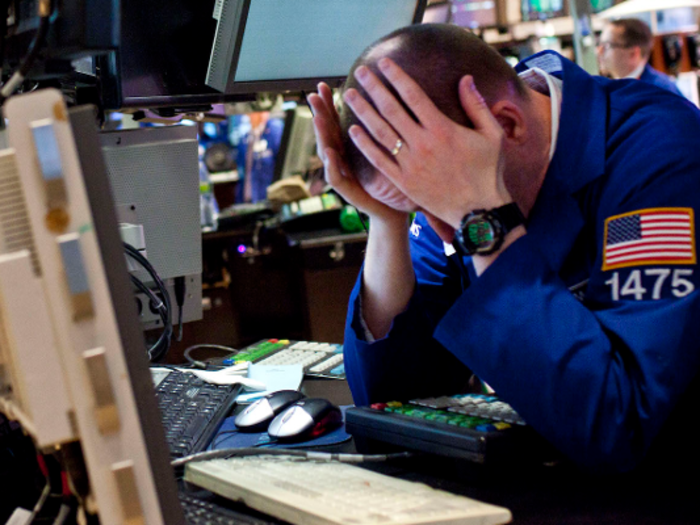- Home
- slideshows
- miscellaneous
- The yield curve is inverted. Here's what that means, and what the implications are for the economy.
The yield curve is inverted. Here's what that means, and what the implications are for the economy.
What is the yield curve?

What does an inversion in the curve mean?

The yield curve is considered inverted when long-term bonds — traditionally those with higher yields — see their returns fall below those of short-term bonds.
Investors flock to long-term bonds when they see the economy falling in the near future. This increased demand drives long-term bond prices higher, and pushes yields lower accordingly. The higher the initial price of the bond, the less profit one makes when it reaches maturity.
Inversely, the lack of demand for short term bonds — caused by investors fearing an upcoming economic downturn — drives prices lower. Lower prices bring higher yields.
The most commonly feared inversion arrives when 10-year bond yields fall under two-year bond yields. This inversion leads the yield curve to slope downward from the three-month bond to the 10-year bond.
Why does Wall Street care so much?

As mentioned above, a "2-10" inversion is regarded as one of the most consistent recession indicators for the US economy. It has preceded every recession since 1950.
Investors turn to bonds when stocks see increased volatility. But if too many investors are moving into long-term bonds, the collective sentiment measured with a yield curve inversion serves as a threshold for how Wall Street thinks the economy will perform.
Inverted yield curves arrive when long-term debt is deemed riskier than short term debt. Though many investors try — and fail — to time the exact moment to buy or sell assets to maximize their returns, the consensus represented by an inversion is historically correct, and foreshadows economic woes to come.
What happens after the curve inverts?

While yield curve inversions have successfully signaled recessions for the last 50 years, the economic downturns can come anywhere between 14 and 34 months after the inversion hits, according to a Credit Suisse report. On average, markets rally about 15% after the yield curve invert.
While inversions tend to spark market selloffs the day they arrive, the indicator often arrives many months before the economy falls into a recession. The downturn tends to hit hardest about 22 months after a "2-10" inversion, according to Credit Suisse.
What are some other recession indicators?

A yield curve inversion is among the most consistent recession indicators, but other metrics can support it or give a better sense of how intense, long, or far-reaching a recession will be.
For example, the Great Recession stemmed from the collapse of the US real estate market and a financial crisis tied to mortgage-backed assets. It led to widespread foreclosures, loss of life savings and, eventually, global economic crisis.
Yet not every recession is the same, and there's no guarantee that the next downturn will cause foreclosures or another kind of financial loss.
Economists look at countless metrics to predict what future recessions will look like, including: the unemployment rate, home starts, wage growth, consumer confidence, GDP, job quits, and consumer debt.
Some figures will lend hints as to when, where, and how a recession will hit, while others may only change after an economic contraction already begins. It's even possible the most dependable indicators haven't been found. Keeping an eye on a select number of popular metrics can help investors weather the storm if a recession grows increasingly likely.
Popular Right Now
Popular Keywords
Advertisement